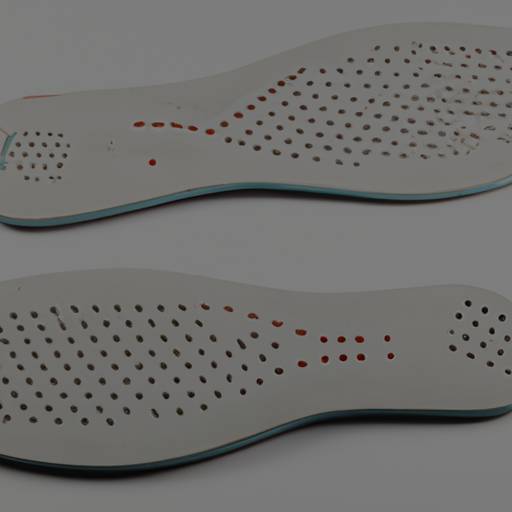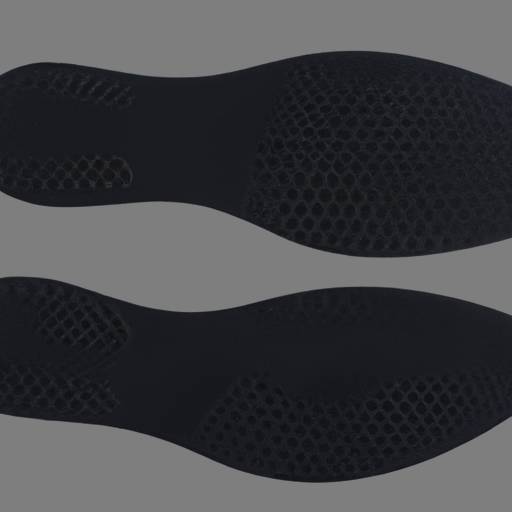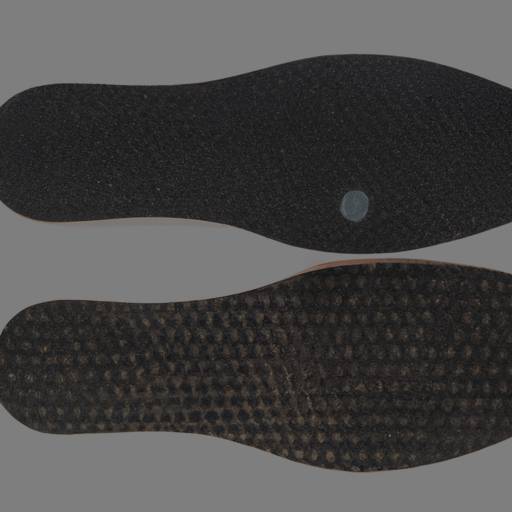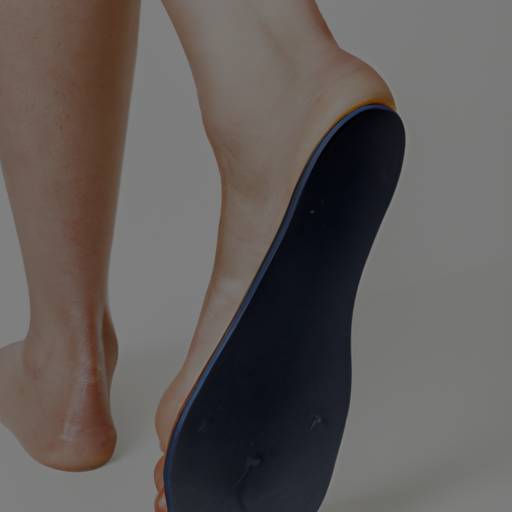Discover the Top Insoles for Great Arch Support
Understanding Arch Support
To fully appreciate the benefits of arch support insoles, it’s important to understand their significance and potential issues that may arise. Arch support plays a crucial role in maintaining proper foot alignment and preventing discomfort or pain associated with unsupported arches.
The Importance of Arch Support
Arch support refers to the structure or device that provides additional support to the arch of the foot. The arch is the curved area that runs along the bottom of the foot, allowing it to distribute body weight evenly and absorb shock during activities such as walking, running, or standing for extended periods.
Proper arch support helps to maintain the natural alignment of the foot and promotes better overall foot function. It can alleviate pressure on certain areas of the foot, reduce strain on the arch ligaments, and prevent conditions such as plantar fasciitis or flat feet.
By providing adequate support to the arch, arch support insoles can help improve overall foot comfort and reduce the risk of developing foot-related problems. However, it’s important to note that the effectiveness of arch support may vary depending on individual factors such as foot type and specific foot conditions.
Common Issues with Arch Support
While arch support offers numerous benefits, there can be potential issues that individuals may experience. Some common issues include discomfort, improper fit, or the need for a break-in period. It’s essential to find the right type of insole and ensure proper fit to avoid any discomfort or potential foot problems.
Additionally, individuals with specific foot conditions or unique foot shapes may require specialized arch support to address their specific needs. For instance, those with high arches may benefit from custom rigid orthotics, while individuals with flat feet may benefit from flexible orthotics.
Understanding the importance of arch support and being aware of potential issues can help individuals make informed decisions when selecting the most suitable arch support insoles for their needs. In the following sections, we will explore different types of arch support insoles and the factors to consider when choosing the right one for you.
Types of Arch Support Insoles
When it comes to finding the right arch support insoles, there are several options available to cater to different needs. Let’s explore three popular types: memory foam insoles, gel insoles, and orthotic insoles.
Memory Foam Insoles
Memory foam insoles are known for their exceptional comfort and cushioning properties. These insoles are made from a material that molds to the contours of your feet, providing personalized support. The memory foam absorbs the impact of each step, reducing pressure on the arches and relieving discomfort.
One of the key benefits of memory foam insoles is their ability to distribute weight evenly across the foot, which can help alleviate pain caused by improper weight distribution. Additionally, the soft and plush texture of memory foam provides a cozy feel, making them ideal for individuals seeking extra comfort. For more information on memory foam insoles, check out our article on memory foam insoles.
Gel Insoles
Gel insoles feature a gel-like substance that provides excellent shock absorption and support. The gel material helps to reduce the impact on the arches, joints, and bones, making them a great option for individuals with arch-related discomfort or pain. Gel insoles also provide a cooling sensation, which can be soothing for tired feet.
In addition to their cushioning properties, gel insoles offer excellent flexibility, allowing for natural foot movement. The soft and pliable nature of gel insoles ensures a comfortable fit inside your shoes. To learn more about gel insoles and their benefits, visit our article on gel insoles.
Orthotic Insoles
Orthotic insoles are specifically designed to provide targeted support and alignment for the feet. These insoles are often recommended for individuals with specific foot conditions or structural imbalances. Orthotic insoles feature a firm arch support that helps to distribute weight evenly and promote proper foot alignment.
The rigid structure of orthotic insoles helps stabilize the feet, reducing excessive pronation or supination. This can help alleviate common foot problems and provide relief from arch-related pain. It’s important to note that orthotic insoles may require an adjustment period as your feet adapt to the new support. If you experience discomfort, it’s recommended to consult a healthcare professional. For more information on orthotic insoles, read our article on orthotic insoles.
When choosing arch support insoles, it’s essential to consider your specific needs, foot type, and any existing foot conditions. The right type of insoles can provide the necessary support, cushioning, and stability to promote optimal foot health and comfort. Don’t forget to consult a healthcare professional or podiatrist for personalized advice on selecting the best arch support insoles for you.
Evaluating Arch Support Insoles
When choosing arch support insoles, it’s important to consider several factors to ensure they provide the right level of support and comfort for your feet. Here are three key aspects to evaluate when selecting arch support insoles: cushioning and comfort, arch height and shape, and durability and longevity.
Cushioning and Comfort
Good arch support insoles should provide adequate cushioning to help alleviate pressure and provide a comfortable experience throughout the day. The cushioning material should be soft yet supportive, effectively absorbing shock and reducing the impact on your feet. Memory foam insoles, for instance, are known for their ability to conform to the shape of your feet, providing personalized comfort and support. Gel insoles, on the other hand, offer a cooling sensation and additional cushioning. It’s important to find the right balance of cushioning that suits your individual needs and preferences. For more information on memory foam insoles, check out our article on memory foam insoles.
Arch Height and Shape
Arch support insoles are designed to cater to different arch heights and shapes. It’s crucial to choose insoles that match your specific foot type to ensure optimal support. Some insoles offer a more rigid arch support, while others provide a semi-rigid or flexible arch support. The height of the arch support should be appropriate for your arch shape. If you have high arches, you may benefit from insoles with higher arch support. On the other hand, individuals with flat feet may require insoles with a flatter arch support. Understanding your foot type and arch shape will help you select the most suitable insoles. For more information on different foot conditions and their related insoles, refer to our article on wearing orthotics side effects.
Durability and Longevity
Investing in arch support insoles that are durable and long-lasting is essential to ensure you get the most out of your purchase. Look for insoles made from high-quality materials that can withstand regular use and maintain their supportive properties over time. The durability of the insoles will depend on factors such as the materials used and the construction. It’s also important to consider how often you plan to use the insoles and whether they are compatible with your daily activities and footwear. Taking proper care of your insoles by following cleaning and maintenance tips, as outlined in our article on cleaning and maintenance tips, can help prolong their lifespan.
By evaluating the cushioning and comfort, arch height and shape, and durability and longevity of arch support insoles, you can make an informed decision when selecting the best insoles for your needs. Remember to consider your specific foot type, any existing foot conditions, and the compatibility of the insoles with your shoes. It’s always a good idea to consult with a healthcare professional or podiatrist for personalized recommendations based on your individual requirements.
Considerations for Choosing Arch Support Insoles
When selecting arch support insoles, it’s important to consider various factors to ensure you choose the right ones for your needs. Here are some key considerations to keep in mind:
Foot Type and Arch Shape
Understanding your foot type and arch shape is crucial when choosing arch support insoles. There are generally three types of arches: low arches (flat feet), medium arches, and high arches. Each type requires different levels of support.
- For individuals with low arches, rigid arch support may be beneficial to provide the necessary stability and reduce excessive pronation.
- Those with medium arches typically benefit from semi-rigid arch support to maintain a healthy balance between support and flexibility.
- Individuals with high arches may require cushioned arch support to absorb impact and alleviate pressure on the arch.
To determine your foot type and arch shape, you can consult with a podiatrist or use the wet foot test, where you step on a piece of paper with wet feet to observe your arch imprint.
Specific Foot Conditions
If you have specific foot conditions, such as plantar fasciitis, overpronation, or supination, it’s essential to choose arch support insoles that cater to those conditions. Look for insoles that provide targeted support and cushioning in the areas that require extra attention. Certain foot conditions may benefit from custom orthotic insoles, which are tailored to your specific needs. Consulting with a healthcare professional can help you determine the most suitable options for your condition.
Shoe Compatibility
Consider the compatibility of the insoles with your shoes. Some insoles are designed to fit a wide range of shoe types, while others may be more specific. Check the sizing and shape of the insoles to ensure they will fit comfortably in your shoes without causing any discomfort or crowding. It’s also important to note that some shoes may have removable insoles, allowing you to replace them with arch support insoles.
By considering your foot type and arch shape, specific foot conditions, and shoe compatibility, you can make a more informed decision when choosing arch support insoles. Remember, the goal is to provide the necessary support and comfort to alleviate any discomfort or pain you may be experiencing. If you’re unsure about which type of insoles to choose, consulting with a healthcare professional such as a podiatrist can provide valuable guidance in finding the best arch support insoles for your needs.
Caring for Arch Support Insoles
Once you’ve found the perfect arch support insoles for your needs, it’s important to take proper care of them to ensure their longevity and effectiveness. Here are some tips for cleaning, maintaining, and maximizing the lifespan of your arch support insoles.
Cleaning and Maintenance Tips
To keep your arch support insoles clean and fresh, it’s recommended to follow the manufacturer’s guidelines for cleaning. Many insoles can be hand-washed using mild soap and warm water. Gently scrub them with a soft brush or cloth to remove any dirt or residue. Avoid using harsh chemicals or solvents as they may damage the materials.
After cleaning, allow the insoles to air dry completely before inserting them back into your shoes. This helps to prevent the growth of bacteria or mold. It’s important to note that some insoles may not be machine washable, so always refer to the care instructions provided by the manufacturer.
Replacement Recommendations
Over time, arch support insoles may lose their effectiveness or become worn out. It’s important to monitor the condition of your insoles and replace them when needed. The frequency of replacement will depend on factors such as the quality of the insoles, your usage, and the level of support required.
As a general guideline, it’s recommended to replace your arch support insoles every 6 to 12 months or when you notice signs of wear and tear, such as flattened cushioning or visible damage. Regularly inspect the insoles for any signs of deterioration, and if they no longer provide the necessary support, it’s time to consider getting a new pair.
Maximizing the Lifespan of Insoles
To extend the lifespan of your arch support insoles, there are some simple steps you can take:
- Rotate your insoles: If you wear the same pair of shoes daily, consider rotating between two or more pairs of insoles. This allows each pair to air out and regain its shape, reducing the risk of odor or deterioration.
- Store them properly: When you’re not using your insoles, store them in a clean and dry place away from direct sunlight. Avoid folding or creasing them, as this can damage the materials and affect their performance.
- Avoid excessive heat: High heat can cause the materials of the insoles to warp or degrade. Keep them away from direct heat sources like radiators or heaters.
- Use them in appropriate shoes: Arch support insoles are designed to fit specific types of shoes, such as athletic shoes or casual footwear. Using them in the wrong type of shoe may affect their fit and support. Make sure to choose the right insoles for the shoes you intend to use them with.
By following these care tips and replacing your arch support insoles when necessary, you can ensure that they continue to provide the optimal support and comfort your feet need. Remember, well-maintained insoles contribute to better foot health and overall well-being.








10 Comments